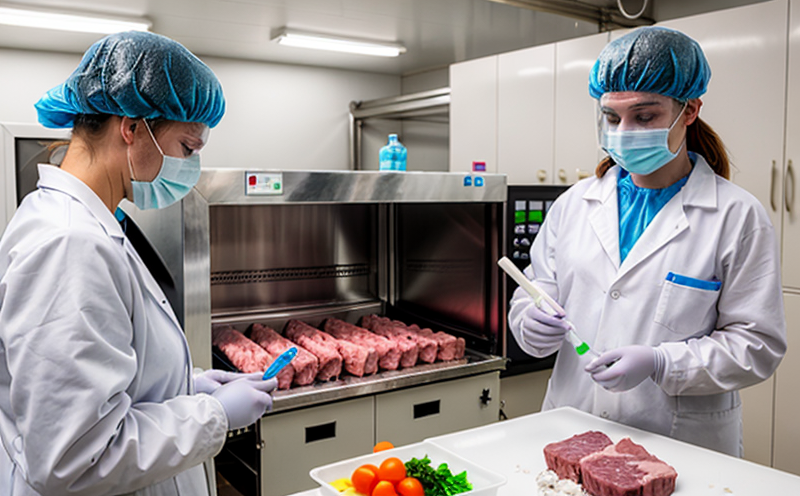AOAC 998.09 Salmonella spp. Rapid Detection in Meat and Dairy
The AOAC (Association of Official Analytical Chemists) International Standard Method 998.09 is a widely recognized protocol for rapid detection of Salmonella species in meat and dairy products. This method allows for quick identification, which is crucial for maintaining food safety standards and ensuring consumer health. Rapid detection methods like this are vital in the modern food industry where timely results can prevent contamination spread and mitigate risks associated with pathogenic bacteria.
The procedure involves several steps: sample preparation, inoculation of the sample into enrichment media, incubation under specific conditions to allow for bacterial growth, and finally, selective isolation and identification using biochemical tests. The speed at which Salmonella spp. can be detected is critical in ensuring that contaminated products are removed from the supply chain before they reach consumers.
The method is particularly useful in quality assurance programs where ongoing testing of raw materials and final products is necessary to ensure compliance with international health standards. In addition, it supports regulatory requirements set by agencies such as the FDA (Food and Drug Administration) and EU authorities.
For dairy and meat processors, this rapid detection method offers a competitive advantage in maintaining high-quality standards while reducing production downtime associated with lengthy testing processes. It also enhances brand reputation by demonstrating commitment to safety and quality assurance.
The AOAC 998.09 protocol is designed to be user-friendly yet robust enough for routine use in laboratory settings. Its simplicity makes it accessible even to laboratories that may not have extensive microbiological expertise, thus broadening the accessibility of rapid detection methods across various facilities.
Compliance with this standard is essential for industries dealing with potentially harmful pathogens like Salmonella spp., ensuring consistent quality and safety throughout supply chains. By adhering to such protocols, companies can build trust among consumers who increasingly demand transparent and safe food products.
Why It Matters
- Consumer Trust: Rapid detection of Salmonella spp. enhances consumer confidence in the safety of dairy and meat products they consume daily.
- Regulatory Compliance: Adherence to international standards ensures that all processes meet stringent regulatory requirements set by governing bodies worldwide.
- Risk Mitigation: Early identification helps prevent further contamination, reducing the likelihood of widespread foodborne illness outbreaks.
Scope and Methodology
| Step | Description |
|---|---|
| Sample Preparation: | Homogenize the sample to ensure uniform distribution of microorganisms. |
| Inoculation: | Inoculate the prepared sample into pre-enrichment media designed for Salmonella growth. |
| Incubation: | Cultivate the inoculated sample at 35°C ± 2°C for 18 to 24 hours under microaerophilic conditions. |
| Selective Isolation: | Perform selective plating on XLT4 agar plates to isolate suspect colonies. |
| Biochemical Identification: | Use biochemical tests and/or PCR techniques for definitive identification of Salmonella spp. |
International Acceptance and Recognition
- The AOAC International Method 998.09 is recognized by the FDA, EU, and other global health organizations.
- This standard is part of ISO/IEC 17025 accreditation criteria for proficiency testing programs.
- It is also acknowledged in WHO guidelines on food safety practices worldwide.
- The method's simplicity and accuracy make it ideal for routine testing in both small and large laboratories.
- Its widespread adoption ensures uniformity across different geographical regions, facilitating international trade and cooperation.





